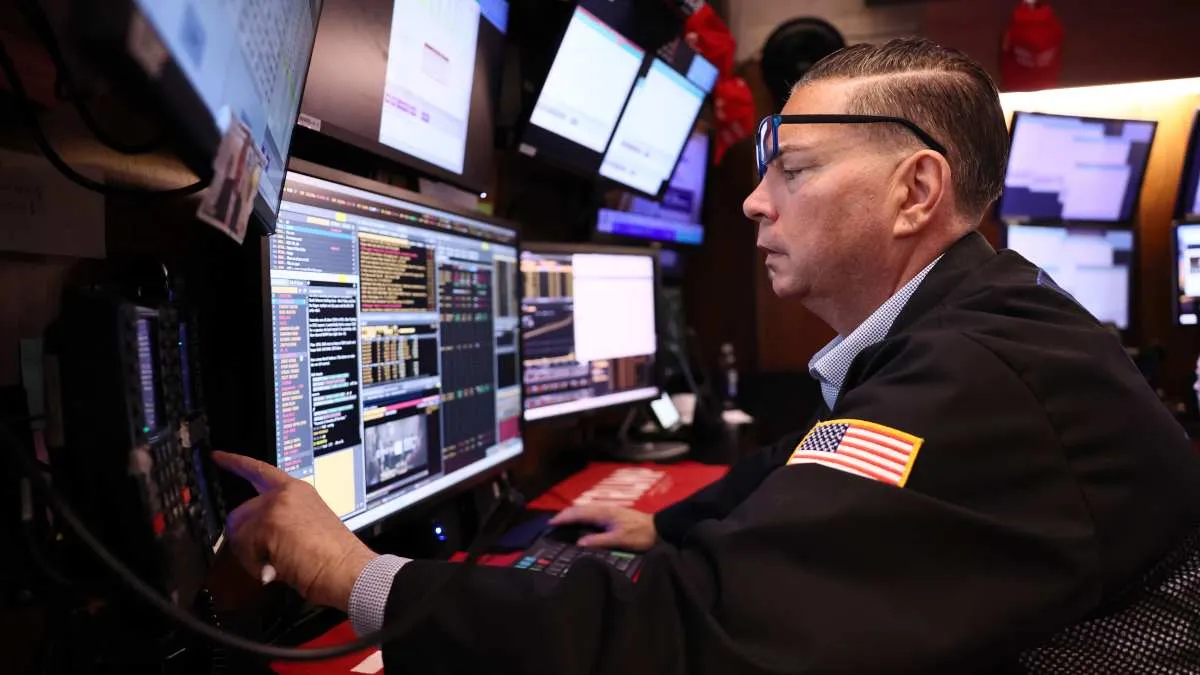Jerome Powell gave bond markets a lift on Friday after signaling the Federal Reserve could restart rate cuts as early as next month. But beyond September, the pace and depth of easing will largely hinge on how the economy performs and that leaves plenty of uncertainty for Treasury investors.
The Fed chair delivered his clearest message yet that the central bank may end its eight-month pause, saying downside risks to the labor market may “warrant adjusting our policy stance.” That comment sent Treasury prices higher, driving the biggest jump in the yield curve in four years a classic reaction to a dovish shift.
Despite the rally, some skepticism remains about how aggressive the Fed will be. Futures markets now put the odds of a September 17 cut at around 80%, but traders aren’t fully convinced. Even after Friday’s move, yields haven’t broken below this month’s earlier lows. Investors are waiting for key labor and inflation reports before making bolder bets.
The cautious tone reflects the Fed’s balancing act: a cooling job market on one side and the risk of inflation ticking higher on the other, especially as President Donald Trump’s tariffs continue to ripple through the economy.
Case in point: this week’s release of the Fed’s preferred inflation gauge may show price pressures remain sticky. On top of that, auctions of two-, five-, and seven-year Treasuries will test demand. And while Powell appears ready to pivot, some fear a repeat of last year, when the Fed began cutting rates only to pause in January after economic data showed surprising resilience.
Powell’s comments “solidify expectations of a September cut,” said Gregory Peters, co-chief investment officer at PGIM Fixed Income. “But whether it’s September or October isn’t the main question. The bigger uncertainty is what the next six months will bring in a still-mixed data environment.”
On Friday, the policy-sensitive two-year yield dropped 10 basis points to 3.7%, near its early August low set after a weak jobs report. Swaps markets now imply two quarter-point cuts by year-end, with a slim chance of a third.
“The current pricing makes sense,” said John Briggs, head of U.S. rates strategy at Natixis North America. “But anything beyond two-and-a-half cuts before payrolls seems overly aggressive.”
Powell’s shift also energized the curve-steepening trade a bet that short-term yields will fall faster than long-term ones as easier policy boosts growth expectations. The gap between five- and 30-year yields reached its widest since 2021 on Friday.
Bond buyers remain comfortable with short maturities, which stand to benefit most from rate cuts. Longer-term Treasuries, however, remain less attractive given inflation risks and the ballooning federal deficit.
The steepener trade is also seen as a hedge against Trump’s escalating pressure on the Fed to slash borrowing costs. The president has repeatedly criticized Powell and even threatened to fire Governor Lisa Cook over mortgage fraud allegations claims she has denied, vowing not to resign.
Such political interference raises concerns about the Fed’s independence. Too many cuts too quickly could reignite inflation and hurt the long-term value of fixed-income assets.
“The front end now has Powell’s support, so yields there should stay anchored,” said Padhraic Garvey, head of Americas research at ING. “The long end isn’t buying it, likely because investors suspect the Fed may be taking inflation risks too lightly.”
Markets are also grappling with the possibility that cutting rates while inflation remains sticky could cap gains on 10-year and 30-year bonds. Some even warn of a replay of late 2024, when long yields climbed despite a full percentage point in Fed cuts.
Inflation expectations ticked higher on Friday, underscoring that risk. “If the Fed is cutting in an environment where inflation is still well above target, markets will likely start pricing in the idea that the target itself could drift higher,” said Meghan Swiber, interest-rate strategist at Bank of America, on Bloomberg Television.
Bond bulls may be celebrating now, but the outlook isn’t without hazards. A strong economic or inflation surprise could quickly unwind gains and trigger another selloff.
“There’s a long way to go between now and September 17,” said Michael Arone, chief investment strategist at State Street Global Advisors.

Subscribe to our newsletter!
As a leading independent research provider, TradeAlgo keeps you connected from anywhere.








